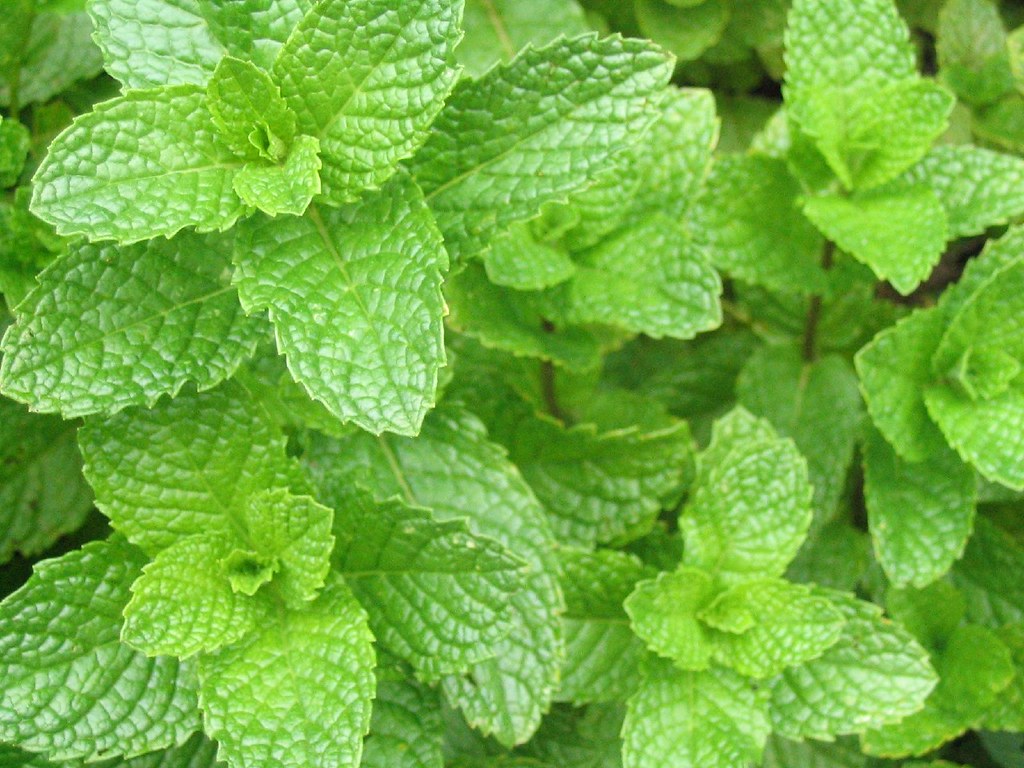

SPEARMINT
Mentha spicata
A classic, aromatic perennial herb.
Spearmint contains 0.5% menthol while mint contains 40%. It's a milder herb to use in salads and tastes great in toasted lamb sandwiches without overpowering them.
We grow this in the nursery as it's a well-known anti-androgen and Jess uses it to make Spearmint tea.
It's an attractive plant in the garden and like mint, will easily run, so it's great for filling contained areas. Prune to stop it getting leggy.
Spearmint, also known as garden mint, has bright green, pointed, and toothed leaves with a characteristic sweet, minty fragrance. It's a vigorous grower and will provide an abundant supply of leaves.
This plant is famously invasive due to its spreading rhizomes, so it's highly recommended to plant it in pots or containers to control its growth.
Perfect for making mint sauce for lamb, adding to salads, desserts, and refreshing drinks like teas and mojitos. Its leaves are best harvested young for optimal flavour.
Spearmint is a great addition to herb gardens and kitchen gardens.
Regular harvesting encourages bushier growth and keeps the plant productive. It thrives in moist, well-drained soil and prefers a sunny to partly shaded spot.
PRICE: $6.00
SIZE: 5cm radius seedling
Spearmint
Mentha spicata
Australian History
Spearmint (Mentha spicata) originated in Europe and Asia and was introduced to Australia, becoming a very common garden herb. It has naturalised in many parts of Australia, particularly in damp, disturbed areas. It is the most common mint grown commercially in New South Wales and in home gardens.
Australian Uses
In Australia, Spearmint is primarily used for culinary purposes. It's a key ingredient in mint sauce, teas, jellies, and is used to flavour confectionery, chewing gum, and beverages. Fresh leaves are popular in summer drinks and salads. The oil also has uses as a natural insecticide.
Australian Growing Guide
Spearmint is easy to grow in Australia but requires containment to prevent it from spreading aggressively. It thrives in moist, well-drained, rich soils with a pH of 6.0-7.5. It prefers full sun to partial shade; in hotter Australian climates, some afternoon shade is beneficial. Regular watering is necessary, especially during dry periods. Propagate from cuttings or by dividing established clumps in late winter or early spring.
Australian Landscaping
Due to its invasive nature, Spearmint is best planted in pots, containers, or raised beds in Australian gardens. This allows enjoyment of its fragrance and fresh leaves without it taking over garden beds. It can be used as a fast-spreading ground cover in areas where this is desired and controlled.
Australian Companion Plants
Spearmint can deter pests like aphids, cabbage moths, and ants. It is considered a good companion for plants like tomatoes, cabbages, peas, and beets. However, it's crucial to keep its roots contained to prevent it from outcompeting nearby plants. Avoid planting different mint varieties close together as they can cross-pollinate and lose their distinct aromas.
Australian Disease Resistance
Spearmint is relatively hardy but can be susceptible to mint rust, powdery mildew, and leaf spot, especially in humid conditions or if overcrowded. Good air circulation is important. Pests can include mint beetles, slugs, and snails. It is generally deer and rabbit resistant.
